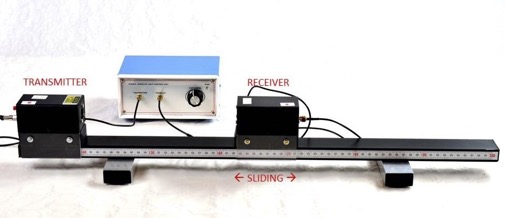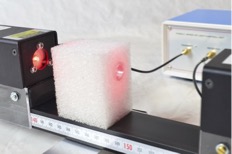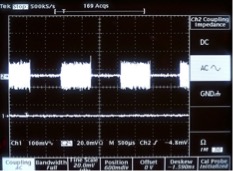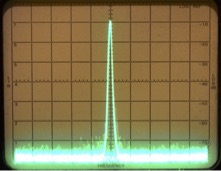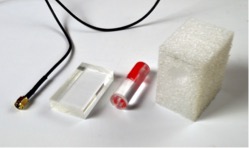ADVANCED AUTONOMOUS BENCHTOP SPEED OF LIGHT APPARATUS
FEATURES
• Easy to use
• Completely autonomous
• Innovative very “sensitive” precise
acoustical display also suitable for
large audiences
• Do not requires any external
component or apparatuses such that
power supply, oscilloscope, lenses,
holders etc.
• Compact benchtop: only 70 cm long
optical rail. As an option only 40 cm
• Nothing to align: pre aligned
• Direct determination of the speed of light
in transparent solids or liquids of small
thickness (and therefore of n)
• Safe: the 1 mW laser beam does not
extends out of the optical path
• Powered by an internal battery
rechargeable via USB. Operating
autonomy extends to tens of hours.
DESCRIPTION
The technique used is that of amplitude
modulating of a laser beam and comparing
the phase between the optical signal and
the electrical modulation signal of the laser.
A laser beam is amplitude modulated with
a very high frequency. Varying the position
of the optical receiver along the optical
bench, the length traveled by the light
when the phase rotation is zero, 180° or
multiples is determined.
The modulation frequency of the laser,
1GHz, is by far the highest used in this
type of determinations and allows the
apparatus to be extremely compact.
A second modulation of the laser beam at
acoustic frequency allows the precise
determination of the positions of minima of
phase difference signals by canceling the
audio signal.
OPERATING
The high frequency modulation f of the laser, which is about 1 GHz, is a precisely given instrumental parameter. The corresponding wavelength is 30 cm and the period T is 1 ns. Along the optical bench there are four positions of the receiver in which the phase difference signals are zero and therefore the monitor audio signal is zero.The distance between these successive positions is about half a wavelength of the modulating signal, therefore about 15 cm.
Due to a possible asymmetry of the modulating waveform the determinations of c are carried out by measuring the distance D between two non-adjacent positions of minimum, corresponding to one full wavelength of the modulating signal, about 30 cm.
Therefore:
c = D/T = D∙f
This device measures the distance traveled by light in 1 ns (10 -9 s).

